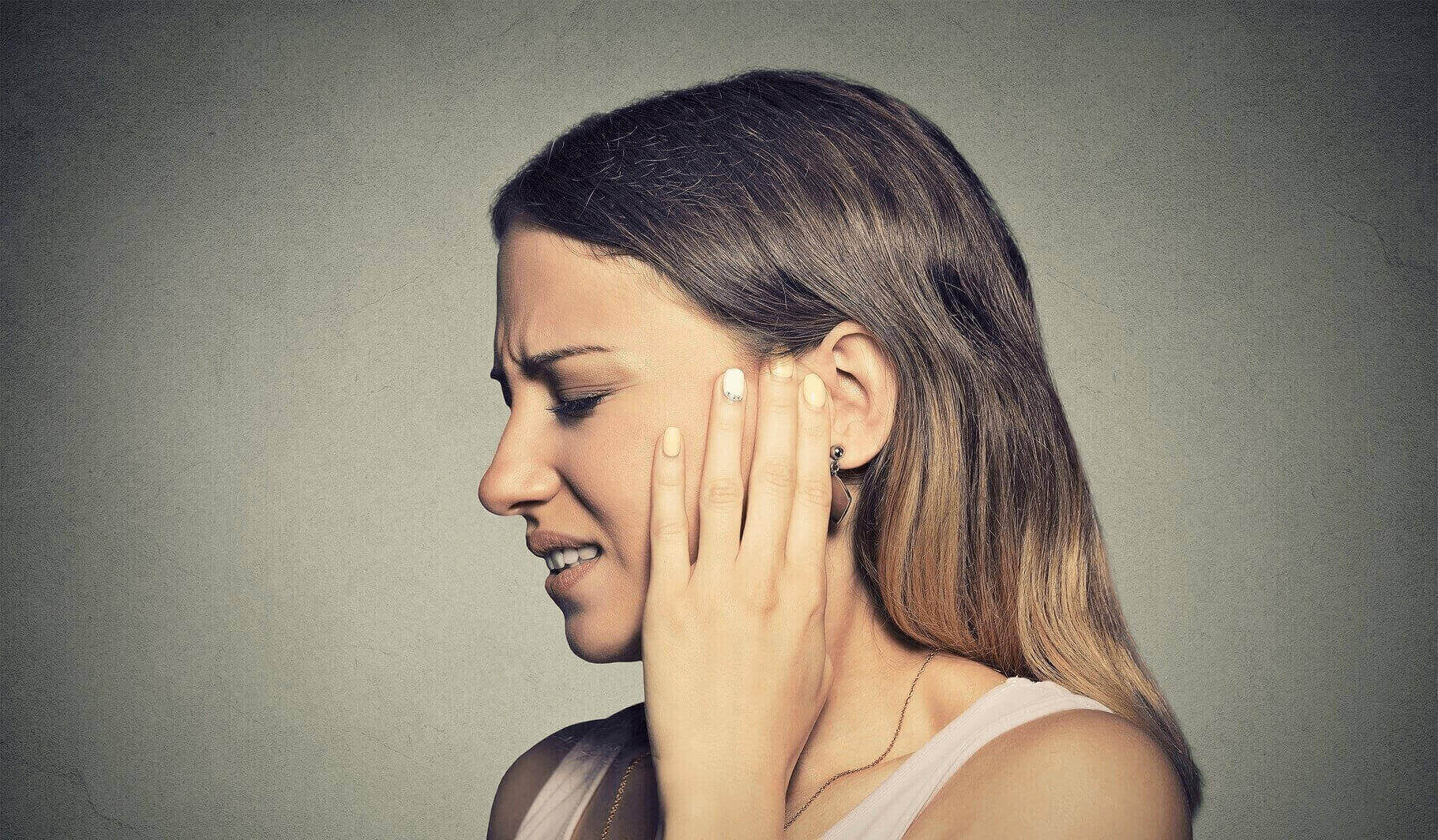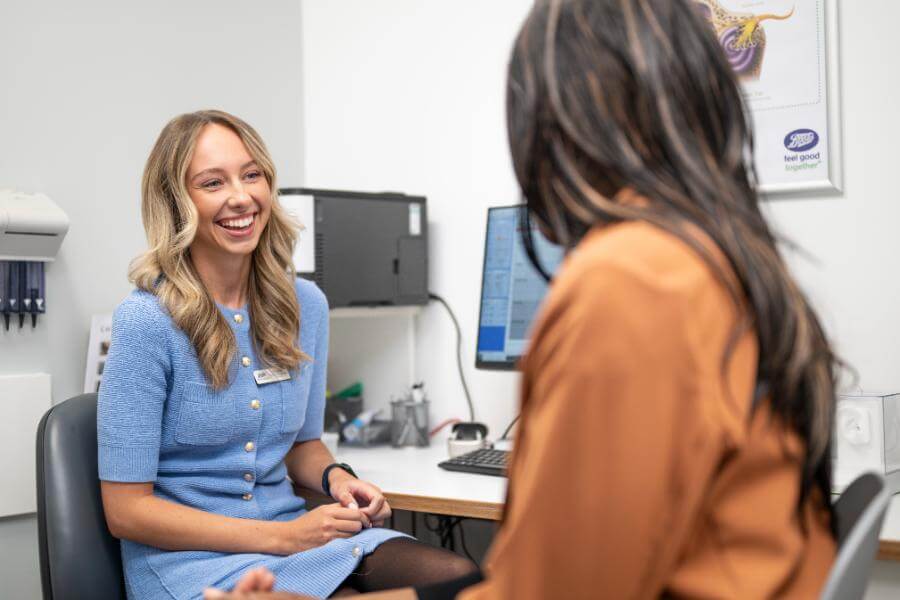Spots inside the ear: causes and treatments

Spots inside the ear: causes and treatments
6 minutes
Published: 21 June 2022
Reviewed: 20 January 2025
Anyone who's experienced a spot or pimple in the ear knows the discomfort it can bring. Beyond the pain, ear spots pose challenges, they are often tricky to access and can linger. Unlike facial or chest acne, ear spots are harder to manage. Popping them can lead to issues, with pus potentially causing inflammation inside the ear canal. Whether it's a blackhead, whitehead, or acne, these spots, while diverse, can present unique problems, making proper care essential.
But first, let's talk about what might cause spots to form in your ear.
What causes spots in the ear?
Several different conditions may contribute to the development of ear pimples. Bacteria accumulating on the surface of your ear is one such example. An inflamed hair follicle or an overly active sebaceous gland can also create an environment that encourages acne formation. Hormonal imbalance, lack of proper hygiene, medications, such as contraceptives, immunosuppressants, and steroids are also possible causative factors. Ear pimples are, in essence, no different than other types of acne you get elsewhere.
Whether the problem originates from a hair follicle, sebaceous gland, or hormone problems, once debris, dirt, or dead skin cells accumulate, bacteria, such as Staphylococcus aureus, can quickly begin to thrive and result in one or more pus-filled bumps. In response to the bacterial growth, the body tries to deal with the offense by triggering an immune response, creating inflammation.
What are the most common types of spots and how to treat them
The medical term for pimple is acne vulgaris. Many different acne types exist that can show up in your ear. Depending on the type you are dealing with, treatment may also differ.
Blackheads and whiteheads
The most common acne types, include closed comedones whiteheads and open comedones blackheads. Treatment for these involves gentle cleansing and topical solutions to prevent further buildup and promote healing.
Inflammatory acne
Whiteheads or blackheads that persist may evolve into inflammatory acne, characterised by red and tender zits. Papules, inflamed blemishes resembling red bumps, can develop from clogged pores. Timely treatment involves topical solutions and avoiding squeezing to prevent worsening.
Cystic acne
Persistent and worsening pimples may progress to nodulocystic acne, presenting larger, tender nodules. Cystic acne involves soft, fluid-filled lumps beneath the skin's surface, often resulting in scars. Seeking professional dermatological advice is crucial for managing and preventing severe cystic acne.
Should I squeeze or pop the spot?
Although opinions may differ, in general, most experts will agree, it is never a good idea to stick anything - including your fingers - into your ear canal. Please don't be tempted to grab a Q-tip or cotton swab in a desperate effort to pop that zit, doing so may cause damage to your ear and may rupture your eardrum. Instead, we have some top tips to help you clean your ears safely at home.
Considering the tight spaces inside your ear canal, using your fingers to squeeze the pus out may not work either. Instead, you may end up causing more harm by pushing the pus deeper inside the ear canal, causing inflammation and more intense pain.
Based on the above, we recommend using other methods, such as gentle home remedies, to speed up the healing process.
Treatments and home remedies
Instead of popping a zit, consider one or more of the following methods. But before using an over-the-counter ointment or cream on your ear, be sure to test the product on a small area of your skin to rule out a possible allergic reaction.
Use a warm compress
One of the best ways to reduce ear spot-related painful inflammation is to use a warm compress. Here are the steps to take:
• Start by wiping the spot with alcohol.
• Next, soak a washcloth in warm water.
• Squeeze out the excess water.
• Fold the cloth in half and place it over the blemish.
• Leave the compress on for ten to fifteen minutes.
• Do this three to four times a day.
Use benzoyl peroxide
Many anti-acne medications contain benzoyl peroxide in various concentrations. When using any product with this active ingredient, use the lowest dose to see how your skin reacts. This compound aims to help kill bacteria on the skin surface and help break up comedones.
Try topical antibiotics
If you decide to see a dermatologist, you may receive a prescription for a topical antibiotic. Erythromycin and clindamycin are two of the most commonly used antibiotics. However, be extra careful not to overuse these preparations because you may inadvertently create bacterial resistance.
Explore tea tree oil
Tea tree oil is one of the most researched essential oils to treat acne effectively. Thanks to its antibacterial and anti-inflammatory properties, tea tree oil is worth a try and should be part of everyone's natural medicine cabinet. Dab a drop or two of tea tree oil on the ear acne. Be sure to dilute it with a carrier oil (e.g., sweet almond oil).
Use retinoid cream
Keep this option as a last resort. Thanks to its keratolytic properties, retinoid cream, or vitamin A, helps thin the skin around the spot. But retinoid creams can have severe adverse effects, and not everyone can tolerate their use. For instance, due to their skin-thinning effect, you may become extra sensitive to sunlight, and your skin may begin to dry out and flake. If the spot is on an ear area that is exposed to the sun (earlobe for example), you will need to apply sunscreen.
If you cannot tolerate retinoid cream, you can try a salicylic acid-containing cream instead.
Summary
Yes, spots in the ear can be painful and highly tempting to pop. But despite the temptation, it is best to resist popping them. Instead, we recommend using safer methods, such as a warm compress to bring down the inflammation and speed up healing. You can also try over-the-counter topical ointments and creams.
If none of these methods work, your healthcare provider may be able to resolve the problem by extracting the blemish.
Author
Boots Hearingcare
Boots Hearingcare



